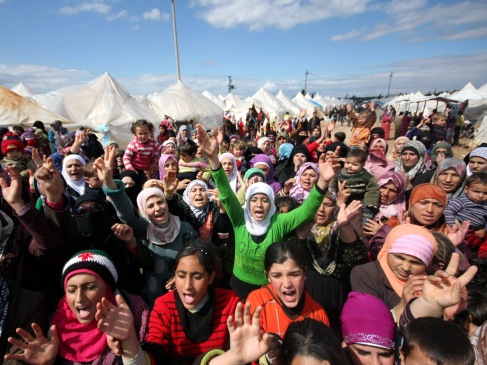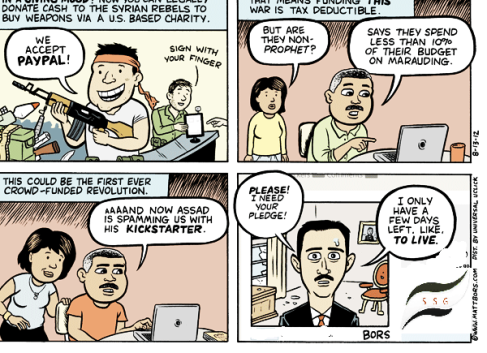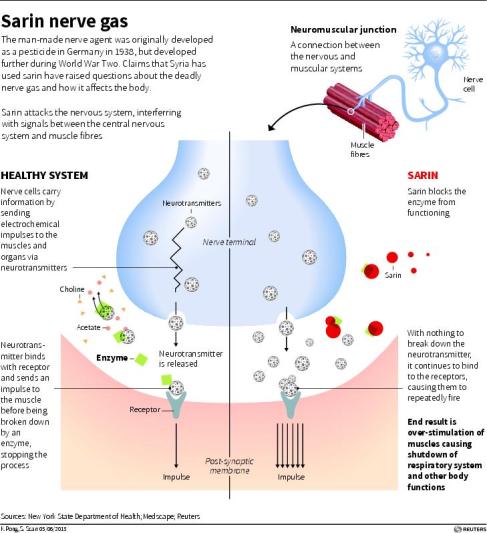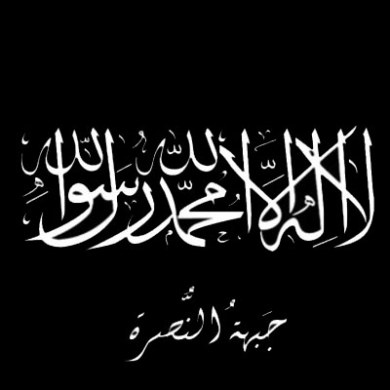Angels and Demons I. Blurred Boundaries and Priorities Abound.
THE CAST OF CHARACTERS-The Syrian People, the Opposition, the Target, and the SLUDGE
THE SYRIAN PEOPLE:
Figure 1: “Arab Spring”.
The “Arab Spring” revolution in Syria, as in the other Arab countries, was the all about the unbearable economic, social and political situations of the populace imposed upon in Syria by the Assad regime. Unfortunately, the people’s struggles and sacrifices have not proven to be very beneficial to any other Arab country other than pulling down one dictator, only to replace it with guardians of the same system of governance. Essentially, change for the sake of change. Since the FSA and al-Nustra are now fighting each other, who do they (the people of Syria) want to rule if Assad falls?
“The Farouq Battalions (of the FSA) and the al-Nusra Front may pretend that it’s all about theology or an end to Assad, but it’s really about who gets to run things and who gets to build a new dynasty on top of the ruins. This isn’t really about democracy. It’s about power. Everyone is staking out their turf because it’s the ticket to money, recruits and control…
In the final analysis, the purpose of power is power.” [Free Syrian Army and al-Nusra Front Now Fighting Each Other. Frontpage Mag, March 27, 2013]
THE OPPOSITION
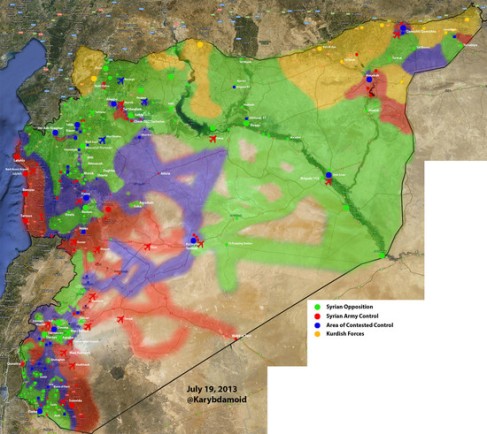 Figure 3. Map showing major support regions in Syria for the Opposition and the Syrian Army (July 19, 2013)
Figure 3. Map showing major support regions in Syria for the Opposition and the Syrian Army (July 19, 2013)
The Syrian rebel fighters fall into three main categories:
a) Local groups of fighters such as the Kurds who are fighting to fulfill the Kurdish aspirations in Syria;
b) “Patriots” who are represented mainly by the Free Syrian Army (FSA), and
c) The Jihadists. <10% of all fighters; Sunnis, al-Nusra Front
The vast majority of the opposition fighters are legitimate nationalists fighting for the country’s freedom and the establishment of a democratic state, including the Kurds who control many towns along the country’s northern border with Turkey. There are the two main players who may replace the Assad regime if successful. [Quillam Foundation Report on Syria. The Jihadist Network in the Syrian Revolution. A Strategic Briefing. 2012]
- The Free Syrian Army (FSA). The FSA was formed in July of 2011 as an opposition group composed of former members of the Syrian Army that refused to fire upon Syrian protesters. They are a member of the Syrian National Coalition.
On September 23, 2011, the Free Syrian Army merged with the Free Officers Movement to become the main opposition group other than al-Nusra.
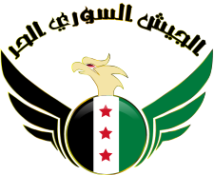 Figure 4. Coat of Arms for the Free Syria Army (FSA)
Figure 4. Coat of Arms for the Free Syria Army (FSA)
The Free Syrian Army (FSA) would grOw in size to about 20,000 in December, 2010 and to an estimated 40,000 by June 2012. Nevertheless, the FSA remained without centralized leadership until December 2012. They are a member of the Syrian National Coalition. Along with other the other insurgent groups, (al-Nusra Front-Islamic State in Iraq and Syria), they have relied mostly on light weapons including assault rifles, some tanks, sling shots, spit-wads, and rocket-propelled grenades (no Scuds hidden in their back pockets). The supplies have come from Saudi Arabia, Libya, and Kuwait.
In July of 2012, through the FSA Syrian Support Group, the FSA began receiving funds from the US Treasury. [US Authorizes Financial Support to Free Syrian Army; Ya Libnan, World News Live from Lebanon”. LB: Ya Libnan. 2012-07-28.]
Figure 5. FSA began receiving funds from the US Treasury in July of 2012.
The FSA presumably is more “pro-democratic” than al-Nusra. Some FSA members have agreed to “share the loot” once the Assad regime is defeated, splitting it according to the sharia-based tradition of al-Ghana’im (spoils of war). This acceptance of al-Nusra’s code of conduct is interesting (see below), as it shows that Islamic traditions are acceptable to certain brigades of the FSA as well. Regardless, The Syrian National Coalition generally felt to be pro-democratic, was officially recognized as the “sole legitimate representative of the Syrian people” by the United States (December, 2012), United Arab Emirates, United Kingdom, Saudi Arabia, France November 2012, etc.)
The Human Rights Watch was investigating FSA rebel forces form executions, and capturing children to use as soldiers (The Syrian Center for the Documentation of Violation (VDC), has documented the deaths of at least 17 children who fought with the FSA), cutting organs from the dead body of a Syrian soldier and putting one in his mouth, executing suspected informers, beheadings, kidnapping Lebanese pilgrims, soldiers, using captured soldiers as “proxy-bombings”(This involved tying the captured soldier into a car loaded with explosives and forcing him to drive to an Army checkpoint, where the explosives would be remotely-detonated).
 Figure 6. Logo of the United Nations
Figure 6. Logo of the United Nations
Human Rights violations from the Report of the Independent International Commission of Inquiry on the Syrian Arab Republic on February 13, 2013 include:
1. Mass executions of civilians
2. “Execution without due process”
3. Extrajudicial executions
4. Arbitrary arrest and detention
5. Enforced disappearance-displace civilians from their homes.
6. Torture and other forms of ill-treatment. Torture and other inhumane acts were not committed as part of either a widespread or systematic attack on the civilian population.
7. Sexual violence, including rape, electrocution of genitals by live wires and the burning of the genitals by cigarettes, lighters or melted plastic.
8. Unlawful attacks to include indiscriminate bombings, civilians as human shields “crime of attacking people”
9. Crime of attacking protected objects; i.e., hospitals, medical supplies
10. Pillaging and razing
These are the good guys?
2. al-Nusra Front (Islamic State in Iraq and Syria). The al-Nusra Front is considered to be the 
Figure 7. Image logo for the al-Nusra Front found to have ties with AIG (al-Qaeda In Iraq)
biggest, baddest jihadist opposition group in Syria, often considered to be the most aggressive and violent part of the opposition. Their aim is to “bring back the law of Allah to his land”. Al-Nusra Front is largely influenced by al-Qaeda’s rigid jihadi ideology.
The United States is viewed as the enemy of Islam, and has attacked the beliefs of other religious groups in Syria, including the Alawites. Also, it was reported that, “Jabhat al-Nusra has not hesitated to strike deals with the Assad regime. Bad news is that that they are associated with AIQ (al Qaeda in Iraq).
The Assad regime is paying more than $150 million Syrian lire [AU $2.4 million] monthly to them (al-Nusra Front) to guarantee oil is kept pumping through two major pipelines in Banias and Latakia.
This group believes that every regime which does not enforce sharia as law is illegitimate. Assad as members of Alawite do not practice sharia law. Jihadists such as al-Nusra practice kuffar-labelling Alawites, Shiites and Sufis as non-Muslims (Infidels).
Objectives of the al-Nusra opposition:
1. To establish a group including many existing jihadists (including AIQ-al-Queda in Iraq), linking them together into one coherent entity
2. To reinforce and strengthen the consciousness of the Islamist nature of the conflict to build military capacity for the group, seizing opportunities to collect weapons and train recruits, and to create safe havens by controlling physical places upon which to exercise their power.
4. To create an Islamist state in Syria
5. To establish a ‘Caliphate’ in Bilad al-Sham (the Levant)
They disagree with the FSA leadership, particularly their relationships with regional and international players and their attitude towards democracy.
[Quillam Foundation Report: Jabhat al-Nusra li-ahl al-Sham min Mujahedi al-Sham fi Sahat al-Jihad. A Strategic Briefing]
Human Rights violations include suicide bombings, a massacre in the town of al-Latamina, and various executions including (most recently) a Catholic priest.
Human Rights violations from the Report of the Independent International Commission of Inquiry on the Syrian Arab Republic on February 13, 2013 include:
1. Mass executions of civilians
2. “Execution without due process”
3. Extrajudicial executions
4. Arbitrary arrest and detention
5. Enforced disappearance-displace civilians from their homes.
6. Torture and other forms of ill-treatment. Torture and other inhumane acts were not committed as part of either a widespread or systematic attack on the civilian population.
7. Sexual violence, including rape, electrocution of genitals by live wires and the burning of the genitals by cigarettes, lighters or melted plastic.
8. Unlawful attacks to include indiscriminate bombings, civilians as human shields “crime of attacking people”
9. Crime of attacking protected objects; i.e., hospitals, medical supplies
10. Pillaging and razing
THE TARGET-“THE BUTCHER OF DAMASCUS”
Syrian President Bashar al-Assad and his family come from the minority Alawite Muslim religious group, an offshoot of Shi’ite Islam that comprises an estimated 12 percent of the total Syrian population.
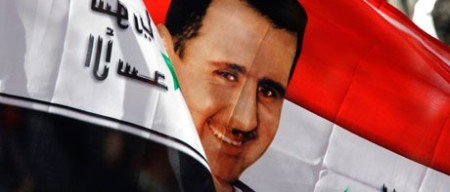 Figure 8. President Bashar al-Assad of Syria
Figure 8. President Bashar al-Assad of Syria
Although Muslim, the Alawites are considered kuffar (infidels) by jihadist groups such as the opposition al-Nusra (al Qaeda affiliated) group.
Socioeconomic inequality increased significantly after free market policies were initiated by Hafez al-Assad (his father) in his later years, and accelerated after Bashar Assad came to power. With an emphasis on the service sector, these policies benefited only a minority of the nation’s population, mostly people who had connections with the government, and members of the Sunni merchant class of Damascus and Aleppo.
All infidels according to jihadist philosophy.
Violations of Human Rights (UN Report) before the uprising under Bashar al-Assad included:
1. Lengthy pretrial and incommunicado detention
2. Arrested and detainments without providing just cause
3. Tortured and physically abuse
4. Restrictions on freedom of speech, press, assembly, association, and religion. Those belonging to the Muslim Brotherhood or Communist Party were banned.
5. Ethnic and racial discrimination-Kurds were denied citizenship until April 2011
6. Sexual Violence
7. Detention of political prisoners
Deterioration of US-Syria relations occurred primarily due to:
1. Interference in Lebanese affairs
2. Protection of the leadership of Palestinian rejectionist groups in Damascus
3. Pursuit of Weapons of Mass Destruction (WMD)-particularly during the Iraqi war
4. Being a state sponsor of terrorism such as:
- Hamas. Syria provided support to Hamas during the Second Intifada; since braking from Assad in 2011, Hamas supports the opposition. But of course.
- Palestinian Islamic Jihad-Maintains relations with both Iran and Syria against Israel. Currently receives around $3 million/month in aid from Iran
- Popular Front for the Liberation of Palestine-General Command-A small Palestinian nationalist militant organization based in Syria. Initially with the PLO,
They have been involved in numerous terrorist attacks on Israel and Lebanon to operate within its borders, and providing SCUDS to Hezbollah forces in Lebanon.
Even though Syria has publicly condemned international terrorist attacks, and has not been directly linked to terrorist activity since 1986, this resulted in economic sanctions against Syria in 2004 under President Bush and again in 2010 under President Obama.
5. US gave $6 million to the Barada satellite television channel which broadcast anti-government programming into Syria.
6. Syria’s opposition to the US-Iraqi War.
After the Arab Spring uprising, Assad ordered a mass crackdown and military sieges on pro-rebel protesters as related to the wider “Arab Spring” movement. Although considered a “reformer”, Al-Assad has been an outspoken critic of the United States, Israel, Saudi Arabia, and Turkey.
Human Rights violations from the Report of the Independent International Commission of Inquiry on the Syrian Arab Republic on February 13, 2013 include:
1. Summary mass executions of civilians
2. Extrajudicial executions
4. Arbitrary arrest and detention
5. Enforced disappearance-displace civilians from their homes.
6. Torture and other forms of ill treatment-Torture and other inhumane acts were not committed as part of either a widespread or systematic attack on the civilian population.
7. Sexual violence, including rape, electrocution of genitals by live wires and the burning of the genitals by cigarettes, lighters or melted plastic
8. Unlawful attacks to include indiscriminate bombings, civilians as human shields “crime of attacking people”
9. Crime of attacking protected objects; i.e., hospitals, medical supplies
10. Pillaging and razing
THE SLUDGE-SARIN
Figure 9. Molecular conformations of Sarin (Isopropyl methylphosphonofluoridate) 3D (Top) and 2D (Bottom)
ChemSpider ID: 7583
- Molecular Formula: C4H10FO2P
- Average mass: 140.093201 Da
- Monoisotopic mass: 140.040237 Da
-
SMILES:
CC(C)OP(=O)(C)F
- Citation: CSID:7583, http://www.chemspider.com/Chemical-Structure.7583.html (accessed 03:25, Sep 8, 2013)
Sarin is an organophosphorus compound with the formula [(CH3)2CHO] CH3PF. It is a colorless, odorless liquid, used as a chemical weapon owing to its extreme potency as a nerve agent.
Sarin is a potent inhibitor of acetyl cholinesterase, a protein that degrades the neurotransmitter acetylcholine after it is released into the synaptic cleft.
Figure 10. Pathophysiology of Sarin at the neuromuscular junction (courtesy, State Department of Health, Medscape).
A build-up of acetylcholine in the synaptic cleft, due to the inhibition of cholinesterase, means the neurotransmitter continues to act on the NMJ, so that any nerve impulses are continually transmitted.
The muscle, particularly the respiratory muscles, remain in a stable of contraction and are unable to relax resulting in asphyxiation and death. Sarin can be fatal within one minute after direct ingestion of a lethal dose, due to suffocation from lung muscle paralysis.
Sarin has a high volatility (ease with which a liquid can turn into a gas) relative to similar nerve agents, therefore inhalation can be very dangerous and even vapor concentrations may immediately penetrate the skin. A person’s clothing can release Sarin gas, which can lead to exposure of other people.
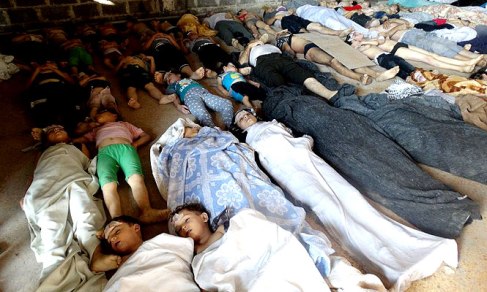 Figure 11. Victims of the sarin attack in Syria, 2013.
Figure 11. Victims of the sarin attack in Syria, 2013.
The initial symptoms following exposure to Sarin are a runny nose, tightness in the chest and constriction of the pupils. Soon after, the victim has difficulty breathing and experiences nausea and drooling. As the victim continues to lose control of bodily functions, the victim vomits, defecates and urinates.
Figure 12. Signs and symptoms of sarin toxicity
This phase is followed by twitching and jerking. Ultimately, the victim becomes comatose and suffocates in a series of convulsive spasms:
S (Salivation-Drooling)
L (Lacrimation-Tearing)
U (Urination)
D (Defecation)
G (Gastrointestinal distress)
E (Emesis-Vomiting)
This will quickly lead to:
D (Drooling)
E (Emesis)
A (Asphyxiation)
T (Tearing)
H (Horror)
Sarin degrades quickly in the body, first into a substance called isopropyl methyl phosphonic acid (IMPA), and then into methyl phosphonic acid (MPA).
Many nerve agents, including Sarin, Soman, Cyclosarin and VX all break down into MPA, but only Sarin leaves IMPA behind, which is detectable for several weeks (asee image 13 below).
Sarin has been classified as a weapon of mass destruction [WMD] in UN Resolution 687. Production and stockpiling
Note “stockpiling”
of Sarin was outlawed by the Chemical Weapons Convention of 1993 where it is classified as a Schedule 1 substance. It is mixed and stored in aluminum shell casings immediately before or when the shell is in flight. This approach has the dual benefit of solving the stability issue and increasing the safety of Sarin munitions.
This also means they really aren’t released by accident as there is some preparation involved (mixing of enantiomers).
0.5 mg dose=Mild symptoms of intoxication.
Problem in diagnosis of exposure: Sarin in blood is rapidly degraded either in vivo or in vitro. The serum level of unbound isopropylmethylphosphonic acid (IMPA), a Sarin hydrolysis product, ranged from 2-135 µg/L in survivors of a terrorist attack during the first 4 hours post-exposure.
Sarin or its metabolites may be determined in blood or urine by gas or liquid chromatography, while cholinesterase activity is usually measured by enzymatic methods.
 Figure 13. IMPA spike indicative of acute sarin exposure.
Figure 13. IMPA spike indicative of acute sarin exposure.
HISTORY LESSON, HISTORY LESSON.
-Or, “our best friends lay between the sheets.”
1938. Sarin was discovered while designing a very good pesticide. It proved to be good enough to be donated to the German Army Weapons Office in 1939. It is estimated that Nazi Germany produced up to 10 tons.
Cockroaches must have been a major problem in World War II.
1953. Brilliant military strategist, “Q”, decided than since Sarin was such a good pesticide, and that if it was good enough to kill cockroaches (and Jews), it just might kill humans, too! Test it! A ‘misadventure” occurred and 20 year old Ronald Maddison died.
This was before it was discovered that cockroaches could survive a nuclear attack.
Figure 15. Could a cockroach survive a Sarin exposure?
1956. Regular production of Sarin ceased in the United States, though existing stocks of bulk Sarin were “re-distilled” until 1970.
1970. Operation Tailwind/Genoa. Operation Tailwind was a covert incursion into southeastern Laos during the Vietnam War, conducted between September 11-13, 1970.
The “Valley of Death” report claimed Sarin nerve gas had been used, and other war crimes had been committed by U.S. forces during Operation Tailwind during the Vietnam War. Allegations were made that U.S. aircraft, in an unprecedented reversal of policy and breach of international treaties, had utilized Sarin nerve gas (“GB” in US/NATO nomenclature) when North Vietnamese ground troops began to attack the landing zones. Indeed, it was not disputed that some chemical agent was utilized, nor that both North Vietnamese and American soldiers struggled against its effects, which may have also included American defectors. Reportedly, over 100 men, women, and children had been killed during the attack on the village. [Department Of Defense Review Of Allegations Concerning “Operation Tailwind” July 21, 1998]
Another story of Angels and demons?
1968. Syria (Syrian Arab Republic, population 20.2 million, 2011) ratified the 1925 Geneva Protocol, which bans the use of chemical (CW) and bacteriological (BW) methods of warfare “without reservation”.
Well, sort of. It did except for the proviso that the Protocol did not represent recognition of Israel. [Syria’s Chemical and Biological Weapons: Assessing Capabilities and Motivations; M. Zuhair Diab. The Nonproliferation Review/Fall 1997].
Needless to say…
1982. Syria decided to build up its CW capability after recognizing the limitations of Syrian air power against Israel in the 1982 Lebanon War. As a result, Syria adopted an alternative missile strategy, which required a non-high-explosive warhead to compensate for lack of missile accuracy.
1983. The leading Syrian military journal Al-Fikr al-Askri reported on two translated articles: one from a French military journal on chemical and biological weapons and a second from a German military journal on CW decontamination procedures that Syria had continued to build up their CW stockpile.
March 1988. Over the span of two days in March, the ethnic Kurd city of Halabja in northern Iraq (population 70,000) was bombarded with chemical and cluster bombs, which included Sarin, in the Halabja poison gas attack. An estimated 5,000 people died.
1989. Israeli Foreign Minister Moshe Arens alleged chemical weapons (CW) production facilities in Syria are located in the vicinity of Damascus, Homs, and Aleppo.
An Israeli analyst wrote than the “chemical warheads are produced in Syria with the assistance of North Korean and West European technicians and engineers, and that “Syria is not able to attain full independence of foreign suppliers and aid, at least for now.”
According to the U.S. Assistant Secretary of State for Intelligence and Research, Syria “has had a chemical warfare program since mid-1988. A U.S. analyst described Syria’s CW capability as more advanced than that of Iraq, while noting that Syria had a much larger stockpile.
1993. The United Nations Chemical Weapons Convention was signed by 162 member countries, banning the production and stockpiling of many chemical weapons, including Sarin. It went into effect on 29 April 1997, and called for the complete destruction of all specified stockpiles of chemical weapons by April 2007.
November 1996. The Israeli Defense Minister, General Yitzhak Mordechai, claimed that Russian scientists were helping Syria manufacture the nerve gas VX
November, 1996. Syria responded by stating they would use chemical warfare against Israel “if nuclear weapons were used”.
Would Syria even exist following an Israeli nuclear attack? Makes you raise an eyebrow at that statement. Remember the cockroaches..
Rationale for development of (Syrian) chemical weapons strategy
- To act as a deterrent to Israeli use of nuclear weapons against Syria
- To compensate for the loss of Egypt as a military ally after the signing of the Egypt–Israel Peace Treaty in 1979
- To act as a deterrent to its powerful neighbor Turkey in any possible dispute.
[“Syria’s Chemical and Biological Weapons: Assessing capabilities and motivations”. The Nonproliferation Review, M. Zuhair Diab (Fall, 1997)]
May 1, 1997. President Assad, after meeting with Egyptian President Hosni Mubarak on May 1, 1997, replied to a journalist’s question about Israeli allegations that Syria was manufacturing CW by saying:
“Those who have nuclear weapons do not have the right to criticize others regarding any weapon which they possess. If they want disarmament, we should start with nuclear ones. We, the Arabs, are ready to get rid of other weapons.”
July, 2007. A Syrian military arms depot exploded, killing at least 15 Syrians, while fitting a Scud missile with a mustard gas warhead.
December, 2010. The “Arab Spring” movement begins across the Middle East.
January 26, 2011. The Arab Spring in Syria began resulting in a desire to dismantle the Assad regime and replace it with… who knows? Someone else. Anybody. The Syrian conflict begins.
December 23, 2011. Damascus. Al-Nusra was suspected in the first suicide attack of the war when two seemingly coordinated explosions occurred in Damascus, killing 44 civilians and wounding 166.
January 24, 2012. The al-Nusra Front released its first public statement in which they called for armed struggle against the Syrian government.
Interestingly, the Institute for the Study of War linked the formation of al-Nusra with Syrian government sponsorship of Jihadi groups fighting Coalition troops during the Iraq War.
March 2012. According to the Vatican news agency Agenzia Fides, 90 per cent of the Christian population of Homs – about 10,000 people – were expelled from their homes by members of the FSA’s “Farouq Brigades”. The Catholic charity organization Aid to the Church in Need supported the Agenzia Fides report, stating that Christians faced “ethnic cleansing” by Islamic militants.
July, 2012. Mohammed Al-Saeed, a well-known government TV news presenter, was kidnapped by the Al-Nusra Front and executed him.
“The heroes of western Ghouta (in Damascus province) imprisoned the shabih (pro-regime militia) presenter on July 19,” said Al-Nusra. “He was then killed after he had been interrogated.”
July 6, 2012. Iraqi Foreign Minister Hoshyar Zebari has said that members of the al-Qaeda in Iraq (AIQ) have gone to Syria in order to join the al-Nusra Front and bring additional support and weapons. [Karam, Zeina (07/6/2012). “Iraq: Al-Qaeda migrates to Syria”. Associated Press.]
September 28, 2012. Syrian military began moving its chemical weapons from Damascus to the port city of Tartus. Military restarted testing of chemical weapons at a base on the outskirts of Aleppo begins again. Russian Foreign Minister Sergei Lavrov stated that Syria had given the United States “explanations” and “assurances” that it was taking care of the weapons.
November 11, 2012. Syrian National Council. These are the objectives of The National Coalition of Syrian Revolutionary and Opposition Forces (Free Syrian Army, al-Nufstra Front) in their desire to overthrow Assad:
- Oust the regime (including its symbols and pillars of support);Dismantle the security services;
- Unify and support the military councils of the Free Syrian Army;
- Reject dialogue or negotiation with the criminal regime; and
- Hold accountable those responsible for killing Syrians, destroying our country, and displacing our people.[Syria Today 12-11-2012; Local coordination committees of Syrian Black in Doha, theguardian.com, Tuesday 26 March 2013 12.58 EDT]
November 12, 2012. The Arab League on Monday recognized the newly formed Syrian opposition bloc as “legitimate,” urging more opposition groups to join the coalition. The Gulf Cooperation Council (GCC) comprises Saudi Arabia, Bahrain, the United Arab Emirates, Oman, Qatar and Kuwait. [Al Arabiya News. 12 November 2012.]
November 14, 2012. President Obama drew a careful limit around the U.S. role in the civil war in Syria, saying he would not recognize “the opposition” (Free Syrian Army-recognized by several countries as the true leader of the Syrian people”; al-Nusra Front-although a stronger opponent to Assad, nevertheless tied to al-Qaeda) as a “government in exile,” or yield to mounting international pressure to begin arming militias battling President Bashar Assad.
He (President Obama) seemed to have changed his mind about, “yield(ing) to mounting international pressure” one month later. Bow to the King again…
December 3, 2012. Washington, DC. President Obama deplores the use of chemical weapons and said that in the event of “further” (?) use by Syria “there will be consequences and you will be held accountable.”
“Further”?” It’s funny how a single word like “further” can be overlooked.
December 8, 2012. Allepo, Syria. Members of the jihadist opposition group Al-Nusra Front captured a Saudi-owned toxic chemicals plant outside of Aleppo.
December 12, 2012. The State Department says the al-Nusra Front is directly connected to al-Qaeda in Iraq and is pushing for an intolerant Islamist state to be established once al-Assad is ousted. “al-Nusra has sought to portray itself as part of the legitimate Syrian 
Figure 16. al Nusra summarily executing unarmed Alawite prisoners
opposition while it is, in fact, an attempt by AQI (al-Qaeda in Iraq) to hijack the struggles of the Syrian people for its own malign purposes,” State Department spokeswoman Victoria Nuland said in a statement. [December 12, 2012. Aamer Madhani, USA TODAY]
December 7, 2012. The opposition formed the Supreme Joint Military Command Council, known as the Supreme Military Command (SMC). The SMC has the potential to serve as a check on radicalization and help to assert a moderate authority in Syria. If the SMC can create enough incentives for moderation it will likely be able to marginalize the most radical elements within its structure. To this end, the SMC has recognized the importance of the inclusion of some of the more radical forces, while still drawing a red line at the inclusion of forces that seek the destruction of a Syrian state, such as jihadist groups like Jabhat Nusra. [http://www.understandingwar.org/report/free-syrian-army#sthash.Gd9Jlyyj.dpuf]
December 12, 2012. US President Obama announced that he was recognizing the new Syrian opposition council as the “sole legitimate representative of the Syrian people”. Reluctantly, and a more likely scenario is that the entire Arab already recognized them in November.
Who’s pulling whose trigger here?
“al-Nusra Front has sought to portray itself as part of the legitimate Syrian opposition while it is, in fact, an attempt by AQI (al-Qaeda in Iraq) to hijack the struggles of the Syrian people for its own malign purposes,” State Department spokeswoman Victoria Nuland.”
Mo bettah. Go with the Free Syrian Army.
December 23, 2012. al-Bayyada neighborhood of Homs, Syria. Al Jazeera released unconfirmed reports that a gas attack killed 7 civilians in the rebel-held al-Bayyada neighborhood of Homs.
Suspect was the use of Agent 15 (NATO code BZ-a Schedule 2 controlled weapon [Chemical Weapons Convention). The weapon was delivered by tank shell.
Figure 17. Cannisters designed to hold multiple Sarin “bombs”.
January 15, 2013. A secret State Department cable has concluded that the Syrian military likely used chemical weapons against its own people in a deadly attack in Homs, Syria.
January, 2013. National Security Council spokesman Tommy Vietor stated that the “chemical weapons incidents in Syria has not been consistent with what we believe to be true about the Syrian chemical weapons program.” In Turkey, there was reportedly forensic evidence of chemical weapons being used in the conflict, after examining a soil sample smuggled out of Syria. [Reuters].
The US responds by saying, “If Syrian President Bashar al-Assad’s government did resort to these weapons, it would be held to account.”
 Figure 18. Too complicated and “feckless”.
Figure 18. Too complicated and “feckless”.
March 14, 2013. Outaiba, Syria. Chemicals were released by shells. Symptoms consistent with nerve gas (Dyspnea, vomiting, pupil constriction, loss of hearing) were observed.
Soldiers on the ground wearing gas masks were also “presumptive evidence” (and running away when they heard a hissing sound) that chemicals were used. 60 people admitted to a hospital in Nashabiyya.
March 19, 2013. Khan al-Asal district, Aleppo, Syria and Al Atebeh suburbs, Damascus, Syria. 25 people were killed when a “possible” chemical weapon was used and delivered by SCUD missile. The Russian government sided with the Syrian government and blamed the rebels for the attack.
Do the rebels have SCUD missiles too? Really?
March 26, 2013. The Syrian National Coalition was granted Syria’s seat in the Arab League.
March 2013. The jihadist force, al-Nusra, congratulated themselves on being responsible 57 of 69 suicide bombings during the conflict.
April 13, 2013. British military scientists have found forensic evidence of, “some kind of chemical weapon” being used in the conflict, after examining a soil sample smuggled out of Syria.[Euronews]
April 11, 13, 14, and 18, and May 12-14, 2013. Jobar, Syria. Sarin gas used. Witnessed by reporters from Le Monde.
April 25, 2013. U.S intelligence assessment states that the Assad regime had likely used chemical weapons – specifically Sarin gas.
April, 29, 2013. Saraqueb, Syria. Sarin gas used. 2 killed. United Nations independent commission of inquiry on Syria said it had “gathered testimony – indicating” rebels had used the nerve agent sarin in attacks. Samples from victims were analyzed in labs in France and Britain which confirmed Sarin. Britain has evidence suggesting a number of different chemical agents have been used, “sometimes including Sarin, sometimes not,” said Britain’s ambassador to the United Nations, Mark Lyall Grant.
Figure 19. Not a surprise, al-Nusra announces publicly its alllegiance to the Islamic state of Iraq (AIQ, or al-Qaeda In Iraq). The US then publicly announces its support for the Free Syrian Army.
April, 2013. The leader of the Islamic state of Iraq (AIQ, or al-Qaeda In Iraq) released an audio statement announcing that Jabhat al-Nusra is its branch in Syria. The leader of al-Nusra, Abu Mohammad al-Golani, then said that the group will not merge with the Islamic state of Iraq, but still maintain allegiance to Ayman al-Zawahiri, the leader of al-Qaeda.
That won’t even buy you a SRO ticket with Arab League.
The UN General Assembly approved a resolution condemning Assad forces for human rights violations and called for a transitional government.
May 30, 2013. 12 people from Syria’s al Qaeda-linked al-Nusra Front who allegedly had been planning an attack inside Turkey and were in possession of 2 kg (4.5 pounds) of Sarin.
2 kg? Remember 0.5 mg can be toxic.
This was later denied by the Turkish government.
2 kg of Sarin was a mistake? “”Saccharin”!? Gee, we thought it said “Sarin”. So sorry, my mistake. You’re free to go.”
The leader of a rebel group in Idlib Province said, “We are not fighting Bashar al-Assad to go from living in an autocratic to a religious prison” after the Assad government has been overthrown, the next war will be between the FSA and the Islamists”. [Reuters, ANKARA | Thu May 30, 2013 4:09pm EDT]
No doubt.
May 23, 2013. Adra, Syria. Rebels report use of nerve gas. Blood samples obtained and analyzed in France.
June 4, 2013. The British, French, and Turkey governments have said that bodily fluid (blood) samples smuggled out of Syria after the Jaboba attacks and Homs (on December 23, 2012) have tested positive for the nerve agent Sarin.
They have shown the evidence to a UN investigation. A senior UK official said it appeared possible that Syrian army commanders had been given instructed or allowed by the regime to use Sarin “in small quantities”.
Only a little bit.
 Figure 20. “It’s not that big a deal so far,” said Charles Duelfer,
Figure 20. “It’s not that big a deal so far,” said Charles Duelfer,
the former US Special Advisor to the Director of Central Intelligence for Iraq WMD and chief weapons inspector. Charles A. Duelfer replaced David Kay on January 23, 2004 as the leader of the Iraq Survey Group, which was the United States’ search for weapons of mass destruction in Iraq.
June 11, 2013. Ralf Trapp, an independent consultant formerly at the Organization for the Prohibition of Chemical Weapons in The Hague, said finding IMPA in the blood was clear proof of Sarin use.
“It doesn’t get there by any other means. You don’t find it in nature, or in industrial pollution.” [Julian Borger, The Guardian, Tuesday, June 4, 2013]
July 11, 2013. The Free Syrian Army (FSA) commander Kamal Hamami (aka Abu Bassir al-Ladkani) was killed by members of the Islamic State of Iraq and al-Sham ISI(S) in Latakia. The Islamic State of Iraq (ISI) is the organizational name for al Qaeda in Iraq and provides support to al-Nustra. A “high ranking Free Syrian Army official” told as-Sharq al-Awsat that Hamami’s assassination, as well as the beheading of a different FSA leader in Ad-Dana a week earlier, signaled the start of this plan, which would culminate with the announcement of an Islamic State in Northern Syrian on the first day of Eid al-Fitr. The reality indicates that there is an increasing proportion of rebel-held territory in Syria coming under the governance of jihadists such as ISI(S) or al-Nustra.
Damned infighting.
June 13, 2013. Washington, DC, United States. The United States announced that there is definitive proof that the Assad government has used limited amounts of chemical weapons on multiple occasions on rebel forces, killing 100 to 150 people but, “officials cautioned that the number could be higher.” The United Arab Emirates described the Obama administration as “feckless”, “tepid”, and lacking “a strong American leadership”.
 Figure 21. President Obama Responds to Syria’s Use of Chemical Warfare, “OK, now you’ve got me real mad. I’m gonna do something. I will. You’ll see. I’m really serious this time. Dag-nab-it, I asked you not to cross the “red-line” and you did it anyway. Next time I won’t say “please”. Just you wait.” (See December 3, 2012). Mediguano denies all accuracy of this quote and it’s content should be taken very lightly.
Figure 21. President Obama Responds to Syria’s Use of Chemical Warfare, “OK, now you’ve got me real mad. I’m gonna do something. I will. You’ll see. I’m really serious this time. Dag-nab-it, I asked you not to cross the “red-line” and you did it anyway. Next time I won’t say “please”. Just you wait.” (See December 3, 2012). Mediguano denies all accuracy of this quote and it’s content should be taken very lightly.
June 23, 2013. NATO Secretary General Anders Fogh Rasmussen said on Monday he was personally convinced that a chemical attack took place and that the Assad government was responsible. [Euronews, June 23, 2013].
June 23, 2013. While a relaxing vacation from their support of the Syrian people, members of Jabhat al-Nusra attacked a Christian convent in Gassanieh, in northern Syria, physically removed and brutally beheaded Syrian Catholic priest François Murad and two of his assistants. [ASIA/SYRIA – A Catholic priest killed. Bishop Hindo: he offered his martyrdom for peace. Agenzia Fides. 24 June 2013]
July 23, 2012. Aleppo, Syria. Syria admitted to possessing a stockpile of chemical weapons which it claims are reserved for national defense against foreign countries. “Testing” began. Weapons include mustard blistering agents and nerve agents such as Sarin, Tabun, and VX. These agents must be delivered by aerial bombs, surface-to-surface missiles, and artillery rockets. “
August 21, 2013. Ghouta, Syria. 281-350 (British JIC) (maybe up to as many as 1300, who knows) people killed. The United States put the death toll at 1,429. This included 426 children. The attack presumably was ordered by Syrian President Bashar al-Assad.
On his official State sponsored Instagram account, Assad responded by saying the accusations were “completely baseless” and,
“What we say is what we mean: there is no use of such things (chemical weapons) at all, at least not by the Syrian army or the Syrian state, and it’s easy to prove and it is not that complicated.”
A “targeted” operation by the US in response is being discussed. The targets are unknown.
August 29, 2013. The British Joint Intelligence Committee assessed previously that “the Syrian regime used lethal CW on 14 occasions from 2012.” Also, “There is no credible intelligence or other evidence to substantiate the claims or the possession of CW by the opposition (which one?).
The JIC has therefore concluded that there are no plausible alternative scenarios to regime responsibility.”, and, “…it is highly likely that the (Syrian) regime was responsible for the CW attacks on 21 August.” [Letter to the Prime Minister. Jon Day, Chairman of the British Joint Intelligence Committee, August 29, 2013].
Well, what about the report of al-Nusra Front members being arrested in Turkey in May of 2013 with 2 kg of Sarin? Aren’t they considered “opposition”?
It can be a little muddy sometimes. Yes, indeed.
September 7, 2013. The European Union, composed of 28 governments, issued a statement from its foreign policy chief that “a clear and strong response” must be delivered on the use of chemical weapon weapons in Syria, but has urged those advocating military strikes to wait for a UN inspectors’ report, expected later this week.”
President Barack Obama has asked the US Congress to approve the use of force. A final vote in the US Senate is expected by September 16, 2013. France supports a military solution but desires to wait for the UN decision.
Good idea.
A recent Gallup poll indicated 51% of Americans oppose a strike in Syria, only 36% support it and 13% are undecided.
Attack without the support premature to the UN inspector is unnecessary.
What benefit would a military strike be to add to the mounting casualties in the civil crisis in Syria, now over 100,000?
“In the final analysis, the purpose of power is power.”
–Mediguano, 9/7/2013
Figure 22. The bleak future of the Syrian people regardless of who the governing body wil be in the future.


